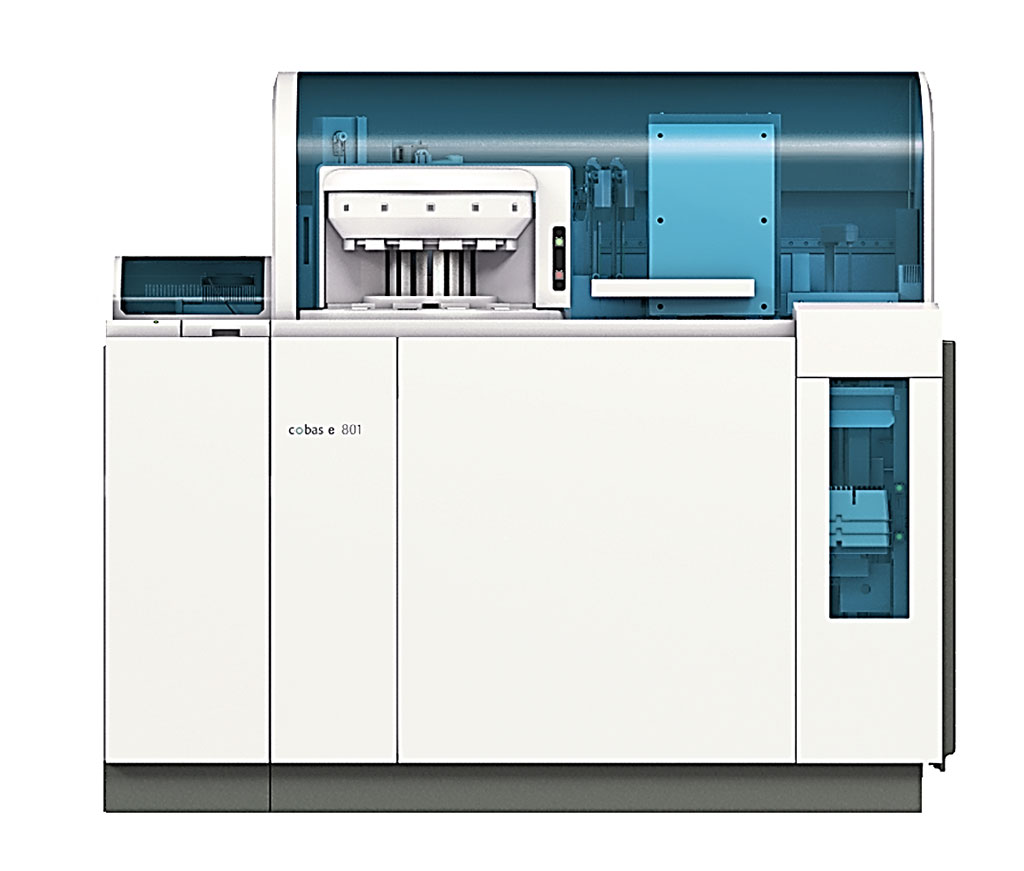Novel Method Developed to Estimate LDL Particle Size
By LabMedica International staff writers
Posted on 01 Apr 2020
Premature atherosclerotic disease commonly occurs in individuals with atherogenic dyslipidemia who share a phenotype characterized by centripetal obesity, insulin resistance, and physical inactivity. Cardiovascular diseases (CVD) are the leading cause of mortality in the Western World being subclinical atherosclerosis the triggering factor for most of these events.Posted on 01 Apr 2020
The reduction in the incidence of cardiovascular events requires the early detection of cardiovascular risk factors (CVRFs), such as low‐density lipoprotein cholesterol (LDL‐C) concentration, nowadays the most important therapeutic target. However, it has been demonstrated that lowering LDL‐C concentration is not enough to prevent all ischemic events even in patients without CVRFs.

Image: The high throughput immunochemistry cobas e 801 module (Photo courtesy of Roche Diagnostics).
Medical scientists at the Bellvitge University Hospital (Barcelona, Spain) and their colleagues included in their study 85 patients who were 19 to 75‐year‐old male non‐smokers. Each patient had their biochemical profiles assessed. A complete lipid profile for each patient was also attained including plasma concentrations of cholesterol, very low‐density lipoprotein cholesterol (VLDL‐C), intermediate‐density lipoprotein cholesterol (IDL‐C), triglycerides (Tg), LDL‐C, high‐density lipoprotein cholesterol (HDL‐C), apolipoprotein A (ApoA‐I), apolipoprotein B (ApoB), apolipoprotein E (ApoE), apolipoprotein CIII (ApoCIII), and lipoprotein A (LPA). In addition, atherogenic indices were calculated using the following formula: IA = LDL‐C/HDL‐C. LDL size (LDL‐Z) and LDL-particles (LDL‐P) and small dense LDL (sdLDL‐C) were also measured.
Supernatant HDL‐C and total cholesterol were measured using a Cobas 8000 modular analyzer (Roche Diagnostics, Risch-Rotkreuz, Switzerland). Cholesterol concentration was determined enzymatically using cholesterol esterase and cholesterol oxidase in the Roche diagnostics Cobas 701. Since supernatant only contained HDL and sdLDL particles, the sdLDL‐C was calculated by subtracting the HDL‐C from the total cholesterol concentration. The nuclear magnetic resonance (NMR) analyses were carried out with the Vantera analyzer (LipoScience, Inc, Morrisville, NC, USA).
The investigators reported that regarding the relation between sdLDL‐C concentration variation and LDL‐Z, they found that an increase in the diameter of LDL particles implies a decrease in sdLDL‐C concentration. Importantly, taking into account the multivariate regression, an increment of 1 nm in LDL size leads to a 126 nmol/L reduction in sdLDL‐C concentration. As a consequence, smaller LDL particles contain a higher concentration of cholesterol. Due to its composition, smaller LDL particles would support the formation and progression of the atheroma plaques in higher degree than larger ones.
The authors concluded that the association between sdLDL‐C, LDL‐Z, and LDL‐P was clear. From a large number of variables, especially LDL‐Z and apoB influence on sdLDL‐C. The results showed that the smaller the LDL size, the higher their cholesterol concentration. Therefore, sdLDL‐C determination by using this easy method would be useful to risk stratification and to uncover cardiovascular residual risk. The study was published on March 21, 2020 in the Journal of Clinical Laboratory Analysis.
Related Links:
Bellvitge University Hospital
Roche Diagnostics
LipoScience













